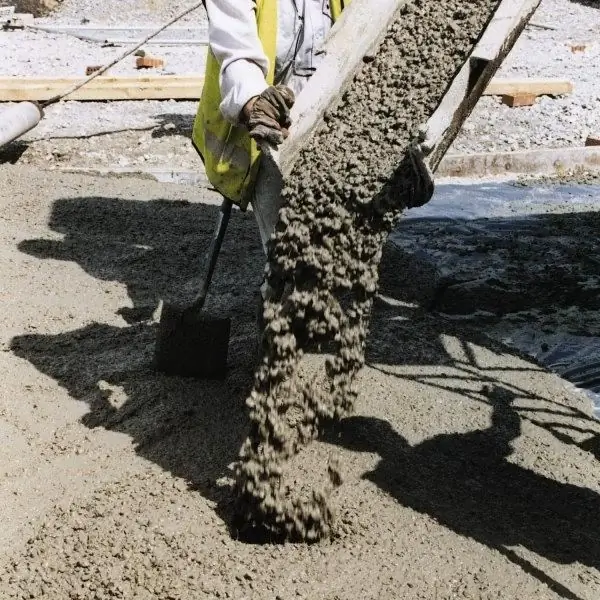For the first time, people started talking about concrete in the past distant centuries. However, over this time period, this material, like other building products, has gone through a long path of transformation.
The very first concrete was discovered by archaeologists on the banks of the Danube in Yugoslavia in 5600 BC. At that time, this building material was made from gravel and local red lime.
Today, concrete should be understood as a stone material of artificial origin, which is formed by hardening a well-mixed mixture with water, as well as large and small aggregates, which are taken according to a certain proportion.
Strength of concrete

The most important characteristic of concrete is its strength. The strength of concrete depends on many factors. The hydration process itself consists of two stages:
- Grip. This stage lasts about a day. A lot depends on temperature here. So, for example, at a temperature of more than 20 degrees, concrete will take three hours to set. If the temperature is zero, then this stage will last 15-20 hours.
- Hardening. This stage starts immediately after the previous one.action and lasts for several years.
In any case, it should be noted that the curing of concrete takes place only if there is moisture. The strength of concrete and the structure itself as a whole increases due to the interaction of this material with water.

It is also necessary to take into account the fact that the curing of concrete stops both in hot and cold weather. That is why, at high temperatures, freshly poured concrete is recommended to be covered with a damp burlap to prevent water evaporation. Negative temperature indicators lead to the freezing of water, which is part of the concrete mixture. In the case of positive temperatures, the hydration process continues, however, by this time the characteristics of this structure are deteriorating, including the strength of concrete. For this reason, experts recommend adding a special substance during the preparation of the concrete solution.
Concrete strength classes

The main indicators of concrete include:
- Concrete strength class in case of axial compression.
- Concrete strength class in case of axial tension.
There are several classes of concrete composition, the main ones are:
- Brand of concrete solution depending on frost resistance. This mixture is used in the construction of structures that are subjected to alternating freeze and thaw.
- Grade of concrete solution depending onwaterproof. This composition is used in the construction of hydroelectric power stations, pools, canals and so on.
Using concrete
Depending on the technical and economic indicators, for the construction of each structure, the selection of the desired class and brand of concrete mix is carried out individually. The strength of concrete in this case plays an important role. Experts recommend using concrete of at least B-15 class for reinforced concrete compressed rod-type elements. For arches and columns, it is best to use B-20-B-30 class concrete. For floor slabs and beams, class B-15 concrete is suitable.






